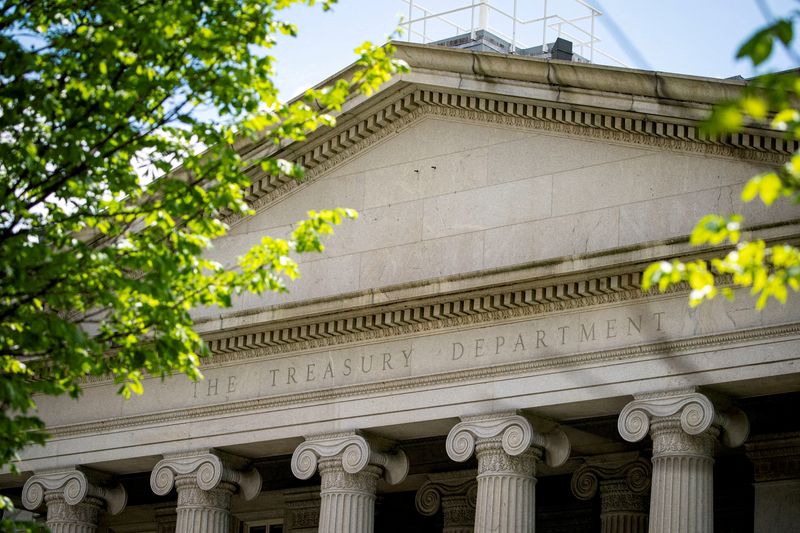By Karen Brettell
(Reuters) – The U.S. Treasury Department is likely to announce next week that it will keep most of its coupon-bearing U.S. Treasury auction sizes steady over the coming quarter, offering the market some relief after recent large increases.
Additional expansions are expected down the road, however, as the U.S. fiscal trajectory worsens.
The Treasury increased its auction sizes from August 2023 as falling revenues, higher interest rates and other factors widened the budget deficit. Two-year note auction sizes, for example, have risen to $69 billion from $42 billion in mid-2023. Ten-year note auctions have grown to $42 billion from $35 billion.
But in May the Treasury said that it expects to keep auction sizes unchanged through the coming two quarters and analysts say it should be well funded until May next year. Uncertainty over the outcome for the November U.S. elections is also likely to keep any large debt changes on hold for now.
“Treasury has strongly signaled that nominal auction sizes will not be increasing in the August-October quarter. The largest risk at this refunding would likely come from a strong change in the language that suggests coupon increases are coming sooner than we expect,” said Angelo Manolatos, macro strategist at Wells Fargo.
One exception may be a modest increase in five-year Treasury Inflation-Protected Securities (TIPS).
The Treasury will give its broad financing estimate on Monday and offer more details on Wednesday.
An update on further increases is more likely “after the election when there’s a reset and everyone has a better idea of what the next 12 to 24 months will be like,” said Will Compernolle, macro strategist at FHN Financial.
Market participants will watch for any mention of the size of Treasury bill issuance, which has grown in recent quarters.
T-bills now account for around 21% of total marketable debt, above the 15-20% range recommended by the Treasury Borrowing Advisory Committee (TBAC).
Treasury Secretary Janet Yellen defended increasing bill sales after some Republican senators in June suggested that the Treasury is increasing bill issuance instead of longer-term debt to stimulate the economy ahead of the November elections.
Treasury bills currently pay higher rates than longer-term debt due to the inversion in the Treasury yield curve and dampening longer-term rates through less issuance can help to boost economic growth.
Assistant Secretary for Financial Markets Joshua Frost this month said that the government remains committed to financing itself at the lowest cost over time, while also maintaining a broad and diverse investor base and being regular and predictable in its issuance.
The increase in Treasury bills makes sense due to strong demand for short-dated debt, said Thomas Simons, senior U.S. economist at Jefferies. Meanwhile, “if the Fed cuts rates… you could point to the Treasury having issued in the long end as a mistake.”
The Treasury may also offer guidance on the debt ceiling, which is due to reinstated at on Jan. 2 unless Congress suspends it again. In previous episodes the Treasury has repaid debt ahead of the deadline, and rapidly increased issuance after the ceiling is suspended.
Meanwhile, the size of Treasury buybacks that began in May could also be increased. So far buybacks have been designed to support liquidity focusing on off-the-run securities, older and less liquid issues trading at a discount.
It may now also launch buybacks meant for cash management purposes, or indicate when they will start. In these it will buy back shorter-dated debt mainly around major tax payment dates.
